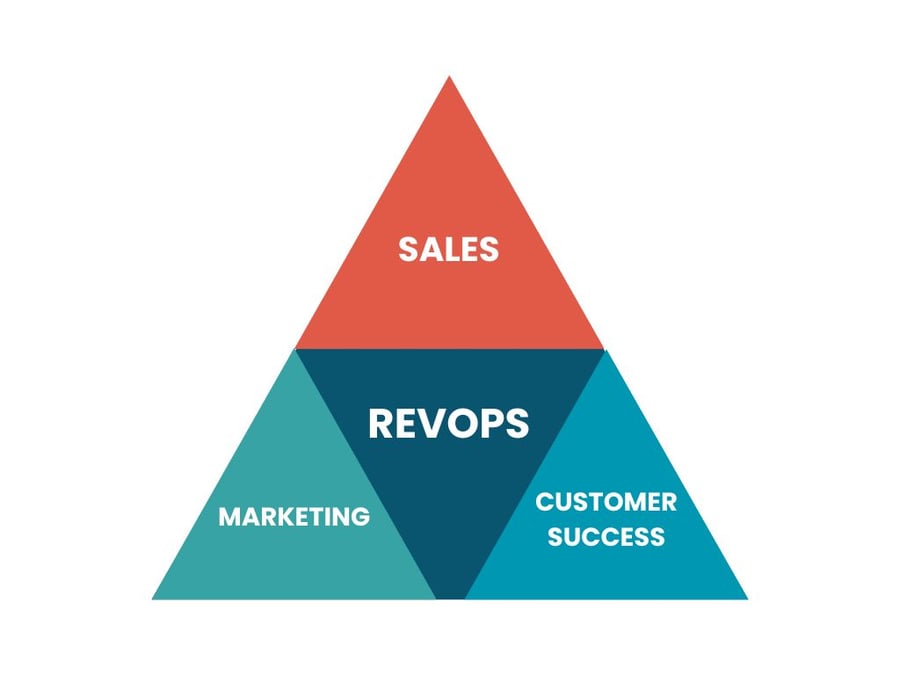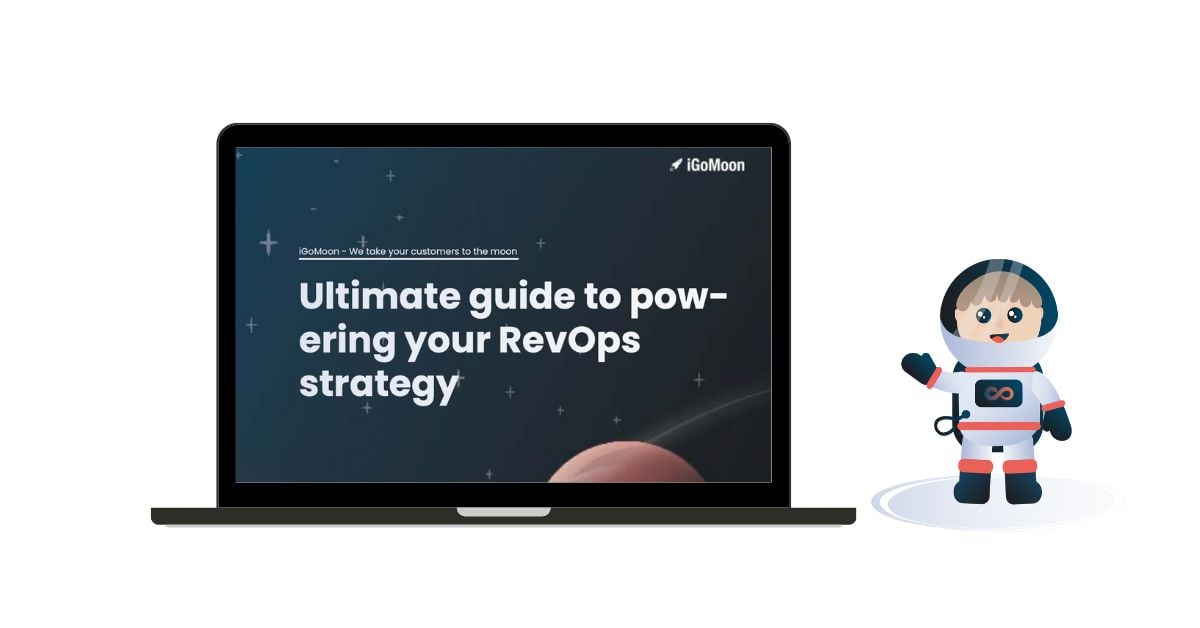RevOps, or Revenue Operations, is a relatively new concept in the world of business operations. It's a strategic approach that aligns sales, marketing, and customer success teams with the goal of maximizing revenue. In this blog post, we will explore who the players are in RevOps, the benefits of adopting a RevOps framework, when is a good time to adopt RevOps, and tips for successful adoption.

Who are the players?
In order to have a successful strategy, we need to have 4 key players including, sales, marketing, customer success, and operation.
The sales team is responsible for driving revenue through direct sales to customers. They are often the primary driver of revenue growth and are a critical component of any successful RevOps team. The marketing team is responsible for generating leads and creating demand for the company's products or services. They play a crucial role in ensuring that the sales team has a steady stream of qualified leads to work with.
The customer success team is responsible for ensuring that customers are successful with the company's products or services. They help to drive revenue growth by ensuring that customers remain loyal and continue to use the company's offerings. The operations team is responsible for managing the infrastructure that supports the other teams. This includes managing technology systems, data analytics, and process optimization.
Benefits of RevOps
There are several benefits of adopting a RevOps framework. First, having an improved alignment. RevOps brings sales, marketing, and customer success teams together, ensuring that everyone is working toward the same goal of maximizing revenue. Second, increased revenue. By aligning teams and optimizing processes, RevOps can lead to increased revenue growth for the company. Third, providing a better customer experience: By focusing on customer success, RevOps can help to improve the overall customer experience, leading to increased customer satisfaction and retention. And lastly, an improved efficiency. RevOps can help to streamline processes, reduce inefficiencies, and optimize resources, leading to improved operational efficiency.
Are you ready for the next step in your journey to success? Get in touch with us.
When is a good time to adopt RevOps?
RevOps can be adopted at any stage of a company's growth, but it is particularly useful when:
- Experiencing rapid growth: As a company grows, it becomes more challenging to manage sales, marketing, and customer success operations separately. RevOps can help to bring these teams together and ensure that they are working efficiently and effectively.
- Expanding into new markets: When a company expands into new markets, it needs to adapt its sales, marketing, and customer success strategies to suit the new market. RevOps can help to ensure that the company is aligned and optimized for success in the new market.
- Facing challenges with revenue growth: If a company is struggling to achieve revenue growth, RevOps can help to identify and address the root causes of the problem. By aligning teams and optimizing processes, RevOps can help to drive revenue growth and overcome obstacles to success.
Do you find yourself in one or a few phases above? Read on to see how you can start and implement a RevOps framework.
Related Article: Why B2B Companies Should adopt a Revenue Operations Strategy
To implement a RevOps framework

1. Get buy-in from key stakeholders
To successfully implement a RevOps framework, it is crucial to get buy-in from key stakeholders in your organization. This includes sales, marketing, customer success, and operations teams. These teams must be committed to working together and aligned with the common goal of maximizing revenue. Ensure that all teams understand the value of RevOps and the benefits it can bring to the organization.
2. Identify and optimize processes
RevOps requires a deep understanding of the processes that drive revenue in your organization. Identify and optimize these processes to ensure that they are efficient, effective, and aligned with the RevOps framework. This may involve changes to technology systems, team structures, and communication protocols.
3. Implement the right technology
RevOps relies heavily on technology systems to manage data and facilitate communication between teams. Ensure that you have the right technology systems in place to support your RevOps framework. This may include CRM systems, marketing automation platforms, and data analytics tools.
4. Develop a clear roadmap
Develop a clear roadmap for implementing your RevOps framework. This should include timelines, milestones, and key performance indicators. Ensure that everyone involved in the process understands the roadmap and their role in achieving success.
5. Communicate regularly
Regular communication is critical to the success of your RevOps framework. Schedule regular meetings with all stakeholders to discuss progress, identify roadblocks, and make adjustments as needed. Ensure that everyone is informed and aligned with the common goal of maximizing revenue.
6. Measure success
Measure the success of your RevOps framework using key performance indicators. This may include revenue growth, customer satisfaction, and operational efficiency. Use these metrics to make data-driven decisions and make adjustments to your RevOps framework as needed.
Tips for successful adoption
Last but not least, to successfully adopt a RevOps framework, it is essential to approach the implementation process with a strategic and collaborative mindset. Therefore, we would like to share a few tips based on own experiences adopting this framework.
One tip for successful adoption is to ensure that all teams and stakeholders are aligned with the common goal of maximizing revenue. This requires effective communication, regular check-ins, and a clear roadmap for implementation. Additionally, optimizing processes and implementing the right technology systems is crucial to ensuring the success of your RevOps framework. This may involve making changes to team structures, data analytics tools, and CRM systems to ensure that they are aligned with the RevOps framework.
Another important tip for successful adoption of a RevOps framework is to measure success using key performance indicators (KPIs). By regularly measuring KPIs such as revenue growth, customer satisfaction, and operational efficiency, you can make data-driven decisions and make adjustments to your RevOps framework as needed. This ensures that you are continuously improving your RevOps framework and optimizing processes to achieve the best possible outcomes.
So don't forget that successful adoption of a RevOps framework requires a collaborative and data-driven approach that involves effective communication, process optimization, technology implementation, and regular measurement of KPIs.
We know how to help you
With in-depth knowledge and proven experience in RevOps strategy, iGoMoon helps you seize the right opportunities with clarity and confidence, and to stay ahead of the competition. Book a meeting with our specialist and take the opportunity to ask all your questions and find out how we can help you achieve your goals or download our free guide on ultimate guide to powering your RevOps strategy.
